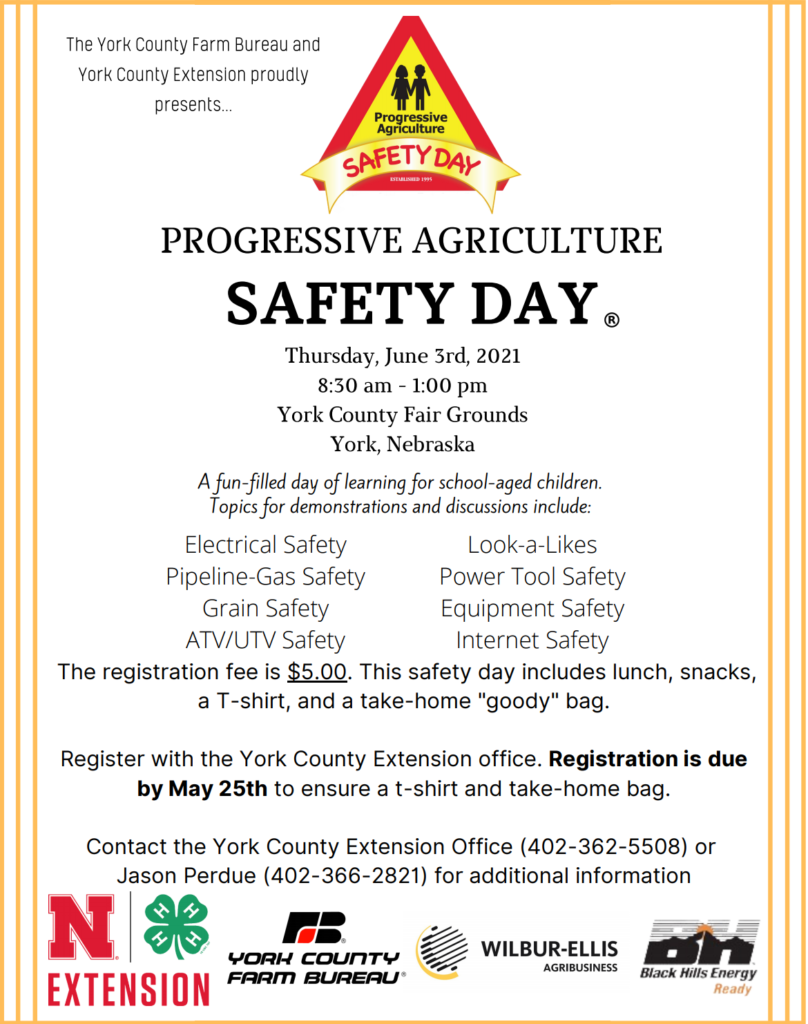| Upcoming Events: June 3: Progressive Ag Safety Day, 8:30 a.m.-1 p.m., York Co. Fairgrounds, York, RSVP: 402-362-5508 June 8: Wheat Variety Tour, 6:30-8 p.m., Mark Knobel Farm, Fairbury June 15: Crop Science Investigation (CSI) for youth, 4:45-5:45 p.m., RSVP to jrees2@unl.edu June 23: SCAL Weed Management Field Day, Clay Center June 30: Glyphosate resistant palmer amaranth field day, Carleton June 30: Haskell Ag Lab Family Field Day, Concord |
Crop Update: Grateful for when the rains were light to break crust and grateful for sunshine this weekend! Hoping weather works out for those who need to finish up planting! For those whose beans were further along, have received comments about crusted soils and lower soybean populations. A general guideline is to leave a field alone if plant populations are greater than 50,000 plants per acre, the stand is fairly uniform, and the field can be kept fairly weed free. I don’t have research going down to 50K, just observation. As you assess plant stands, keep in mind that a gap in one plant row will be compensated by plants in the adjacent flanking rows. They will form extra branches to take advantage of the sunlight. Thus single-row gaps may not be as yield-reducing as you might think, especially in narrower row spacings.
Soybeans greatly compensate for reduced populations by increasing branching. Nebraska On-Farm Research from eastern Nebraska and western Nebraska from 2006-2018 showed only a 1.3 bu/ac yield increase when seeding 180,000 soybean seeds/acre compared to 90,000 seeds/acre in 15-inch or 30-inch rows. (No studies were in sandy soils). Average final plant stands became 154,924 vs. 83,067 plants per acre respectively. Specific examples with lower final plant stands follow:

- A non-irrigated field in Nuckolls County in 2006 was hailed at the cotyledon stage, so planted populations of 100K, 130K, and 160K became average actual stands of 74,417; 89,417; and 97,917 plants per acre with a 4 bu/ac yield difference between highest and lowest plant populations. The average yield in the field was 40 bu/ac.
- A York County irrigated field in 2018 comparing 90K, 120K, and 150K became final plant stands of 60,875, 88,125, and 121,750 plants/acre with yields of 93, 94, and 97 bu/ac respectively.
Every challenge also provides opportunities for learning. So, if you consider replanting, consider leaving some check strips and/or consider an on-farm research study. To do this, consider:
replanting 2 combine widths, skipping 2 combine widths, replanting 2 combine widths, skipping 2 combine widths, replanting 2 combine widths.
It’d be great if you could do that even more often across the field, but just that pattern mentioned above will give you 4 reps that would give you more confidence in the yield results obtained. A Platte County grower did this in 2014. He originally planted 145,000 seeds/acre on May 10 no-till into heavy corn residue. With a plant stand of 75,000 plants per acre, he chose to replant soybeans in strips across the field. He left the original stand and planted an additional 145,000 seeds/acre. Final yields were 58 and 57 bu/ac for the original and replanted stand, respectively. Please let me know if this is something you’re interested in and I’d be happy to help you.
Weed Guide Survey: The Weed Guide has been published since 1960 with over 15,000 copies printed each of the past 5 years. Please consider completing a survey to help us understand the latest trends on how our customers use the weed guide and its value to you: https://ssp.qualtrics.com/jfe/form/SV_1ImdUrOCRmUq9Uy. We really do need and value your input!
Progressive Ag Safety Day June 3: This is a fun-filled day of learning for school-aged children and will be held at the York County Fairgrounds from 8:30 a.m.-1:00 p.m. on June 3. Topics for demonstrations and discussions include: Electrical Safety, Pipeline-Gas Safety, Grain Safety, ATV/UTV Safety, Look-a-Likes, Power Tool Safety, Equipment Safety, and Internet Safety. The registration fee is $5.00. This safety day includes lunch, snacks, a T-shirt, and a take-home “goody” bag. Register with the York County Extension office (402-362-5508). Registration is due by May 25th to ensure a t-shirt and take-home bag; however, please do sign up even after May 25th if you read this after the date! We’d rather have the youth get signed up as this is a great learning opportunity! Contact the York County Extension Office (402-362-5508) or Jason Perdue (402-366-2821) for additional information. We hope to see lots of youth there!



































